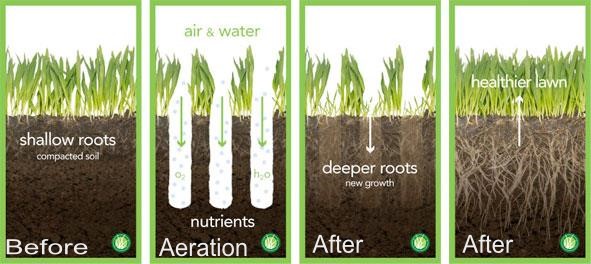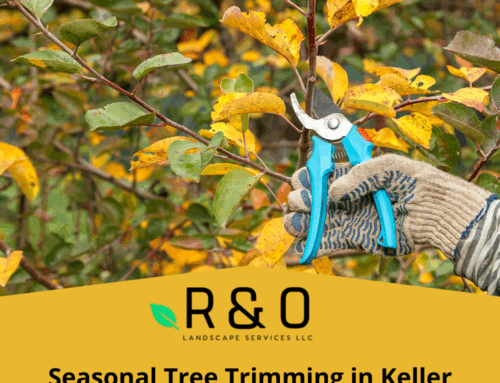Perhaps you’ve heard that aerating your grass regularly promotes a healthy lawn. But many people don’t realize what an essential tool this process is, how it creates a healthy turf, & when it should be done.
What Is Aeration?
Aeration really is essential to a healthy lawn in the same way that exercise promotes wellness in the body. Without aeration, your efforts at other basic lawn care such as fertilization may be less effective.
Every time you walk, mow, or play on your grass the soil becomes compacted. Over time, this traffic hinders airflow to the roots of grass. Just like people, grass roots NEED air to survive. So when the soil becomes compacted, the roots suffocate and die. If your roots can’t breathe or access vitamins, your return on investment in fertilization is minimized.
Another major benefit of aeration is that water & fertilizer penetrates loose soil much more easily than compacted soils. This one-two punch allows grass roots to breath & expend less energy as they extend into loose soil to access nutrition that ultimately fuels growth. All of this supports the growth of beneficial microorganisms that decompose organic material & prevent the build-up of lawn thatch. Thatch creates a physical barrier that further restricts water & nutrients from your lawn.

How Often Does My Lawn Need To Be Aerated?
R & O Landscape Services recommends annual aeration, but its really easy to test out where your own lawn is in terms of compaction. All you need to do is grab a screwdriver & try to push it deep into the ground. In compacted soil, you won’t be able to push it down very far.
How Does the Process Work & When Should It Be Done?
An aerator machine removes pellet-sized portions of soil from your lawn in cylinder shaped plugs, allowing thick, compacted soil to expand into the vacated spaces as the grass grows. Ideally, aeration should be performed in the late spring for warm season grass.




